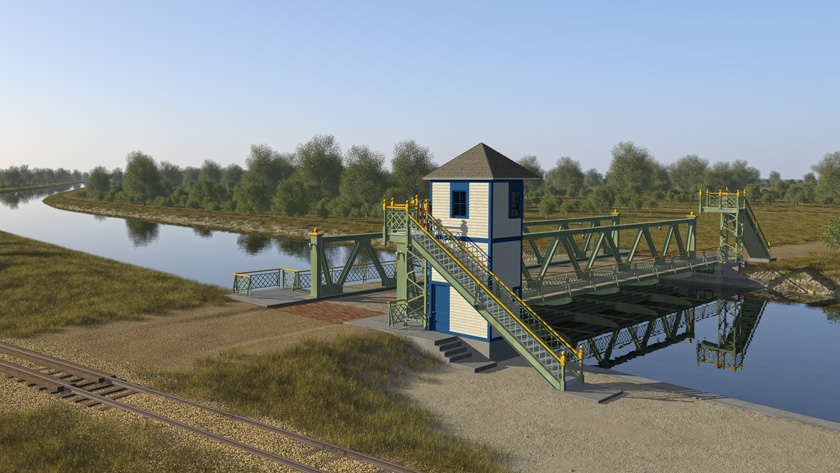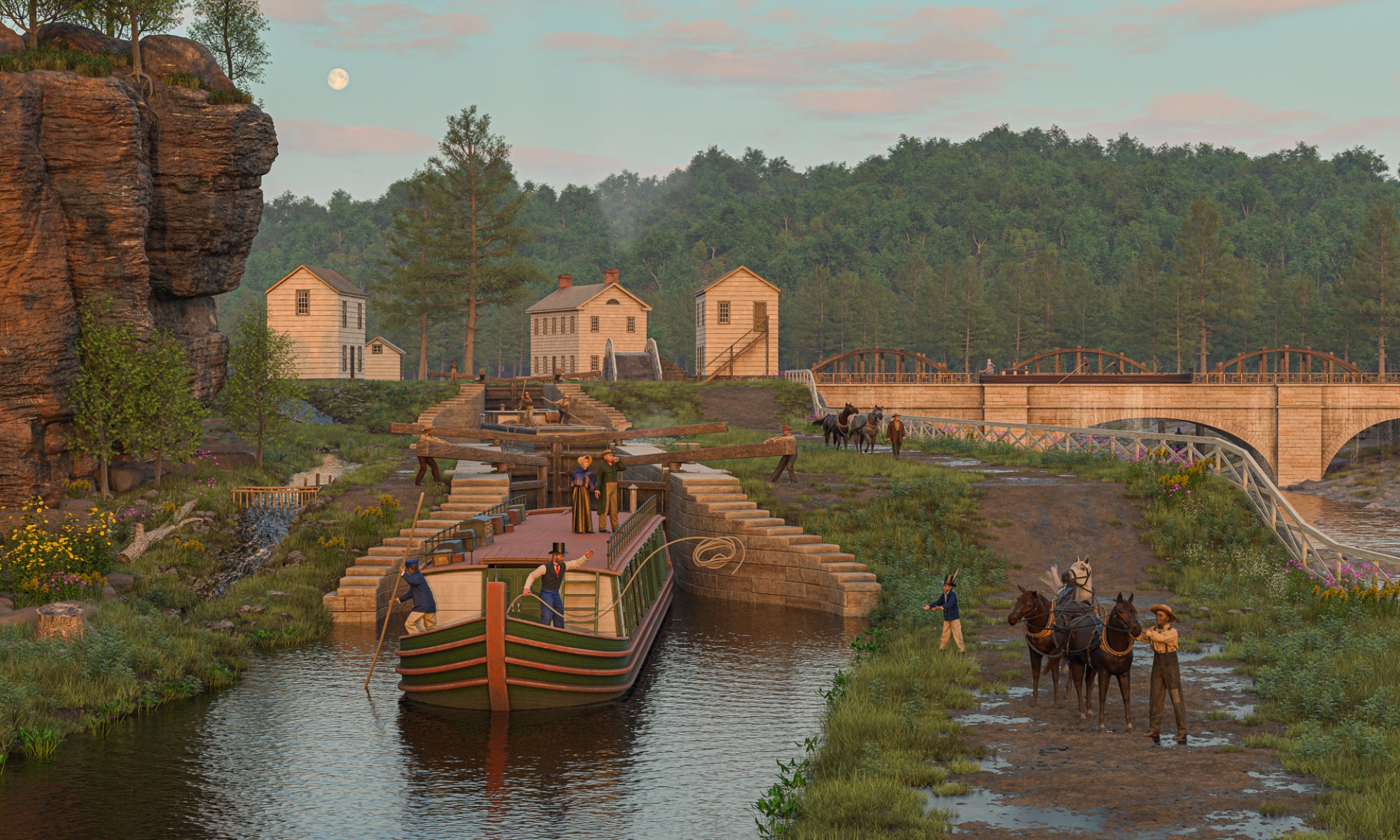
The lift bridge that crosses the canal at Adams Basin was completed in 1913. The technical name of this type of bridge is a mouthful: Warren pony truss towerless lift bridge. Warren bridges use equilateral triangles to spread out the load on the bridge. “Pony truss” refers to the fact that there are no braces across the top of the bridge framework.
But the operative word here is “towerless.” This bridge is one of 16 similar bridges constructed along the western section of the Erie Canal in the early 1900s. Unlike traditional lift bridge designs, they do not use towers to lift the roadbed. Instead, the machinery is contained in concrete-lined pits on either side of the bridge. Two 12-horsepower electric motors are sufficient to raise and lower the bridge. The heavy lifting, so to speak, is done by counterweights and a system of cables that ensure that all four corners are raised and lowered at the same rate.

These may the first such bridges ever built, and they are virtually unique. Designed by a team of anonymous New York state engineers, the bridges’ durability and reliability are attested to by the fact that almost all are still in daily use.

